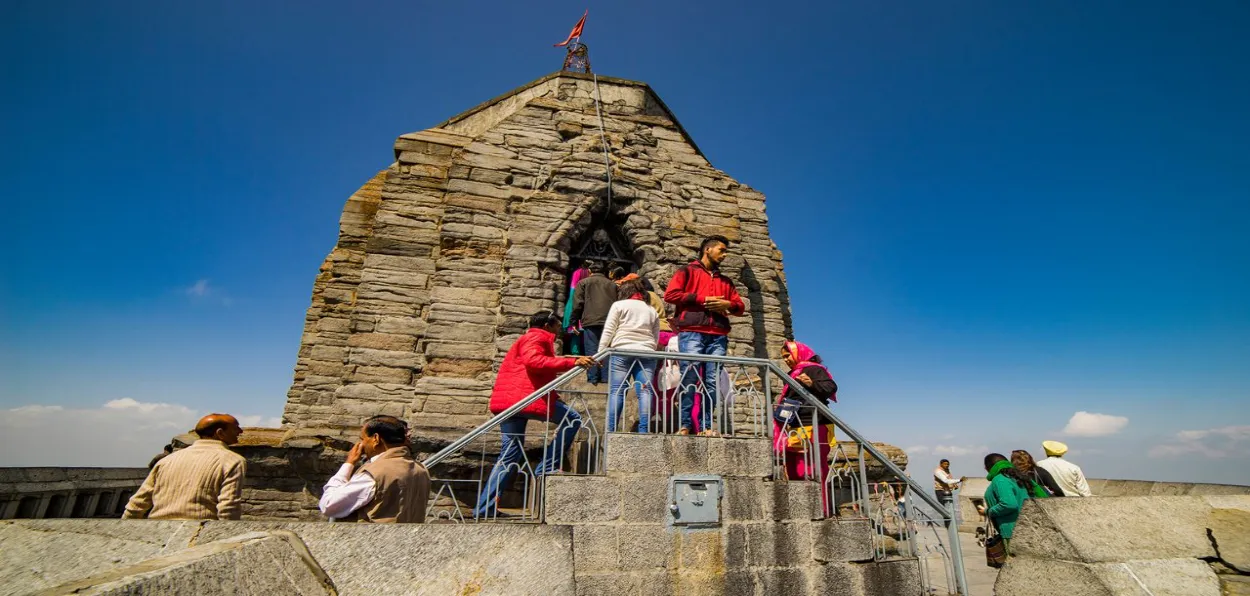
Amir Suhail Wani
Adi Shankara, the 8th-century Indian philosopher and spiritual reformer, is regarded as the pivotal exponent of Advaita Vedanta, a school of non-dualist thought. His life was marked by a relentless journey across the Indian subcontinent, as well as debates on philosophical issues, writing commentaries, and establishing monastic centers.
One of the most significant odysseys was to Kashmir, a region that would influence and be influenced by his philosophical vision.
Today, this visit is more than just a matter of oral tradition—it is etched into the very geography and psyche of the Kashmir Valley. The Shankaracharya Temple in Srinagar, perched high on Gopadari Hill, stands as a monumental witness to his tryst with Kashmir.
Adjacent to the temple lay a small meditation cave, where Shankara entered deep states of tapasya (contemplation). The cave “Jagat Guru Shri Shankaracharya Tapasyasthal” is a pilgrimage site. Local lore has it that Shankara composed the Saundarya Lahari, an eloquent hymn celebrating the Divine Feminine—resonating deeply with Kashmir’s existing Shakti and Tantric traditions – at this place.
Kashmir during Shankara’s time was a centre of Sanskrit learning, ritual, and metaphysics. The region had long nurtured a spiritual tradition, particularly the Shaiva Tantras, which would later crystallize into the sophisticated monistic framework of Kashmir Shaivism.
Shankara's arrival in this vibrant intellectual and spiritual milieu initiated a dialogue of lasting consequence. While his Advaita Vedanta emphasized the impersonal, attributeless nature of Brahman—the ultimate, non-dual reality—Kashmir Shaivism developed a more dynamic vision of the Absolute as Shiva, a conscious, creative force that manifests the universe through self-expression.
Far from merely imposing his ideas, Shankara's engagement with Kashmir reflects a spirit of mutual influence. His Saundarya Lahari and texts like the Prapanchasara Tantra, both attributed to him, show a nuanced familiarity with Tantric and theistic motifs central to Kashmiri spirituality. This integration suggests not a rejection but an incorporation of Shakta and Tantric strands into the broader fold of Advaita, highlighting the philosophical openness and adaptive nature of his mission.
Shankara’s thought would come to influence Kashmir not only through his direct presence but also through the intellectual and spiritual climate he helped shape. Some scholars suggest that Vasugupta, the legendary author of the Shiva Sutras, developed his non-dual Shaiva metaphysics in the generation following Shankara’s supposed visit.
The Shiva Sutras form the foundation of Kashmir Shaivism and unmistakable parallels with Advaita’s non-dual commitments. Both systems affirm the unreality of duality and the centrality of inner realization. However, where Advaita emphasizes a transcendent, motionless Absolute, Kashmir Shaivism insists on a creative, self-aware consciousness that manifests the universe without ever ceasing to be itself.
This divergence proved fertile ground for philosophical refinement and debate. Thinkers like Abhinavagupta and Kshemaraja—pillars of Kashmir Shaivism—would critically engage with Advaita Vedanta in their writings, at times rebutting its impersonalism while still drawing on its metaphysical rigor. The result was not opposition but creative tension, leading to a deeper and more expansive understanding of non-dualism.
Importantly, Shankara’s legacy in Kashmir was not confined to philosophical circles. His integration of Vedic thought with regional spiritual traditions helped bolster the continuity of Sanātan Dharma in the Valley, especially during times of political and religious upheaval.
The continued veneration of the Shankaracharya Temple—which houses a statue of Shankara installed in 1961 by the Dwarka Peeth Shankaracharya—testifies to his lasting impact on Kashmir’s religious consciousness. Shankaracharya Hill serves as both a geographical and spiritual landmark in the region, offering panoramic views of Srinagar city.
While academia and historians may still debate the precise chronology of Shankara’s visit, the living tradition, the temple, and the cave remain powerful markers of his presence. Pilgrims today ascend the temple’s 243 steps not merely to admire the view, but to retrace the footsteps of a sage who meditated there, debated there, and perhaps even transformed there.
Sankara’s visit to Kashmir was far more than a passing moment in his travels—it was a turning point in Indian intellectual history. His encounter with the Valley’s spiritual traditions catalyzed a dialogue between Advaita Vedanta and Kashmir Shaivism that would reverberate for centuries.
ALSO READ: NISAR can detect smallest changes on Earth's surface: Akshata Krishnamurthy
Through this encounter, the non-dualist vision of the Absolute found new expressions—sometimes converging, sometimes diverging—but always deepening the subcontinent’s philosophical and spiritual legacy.
